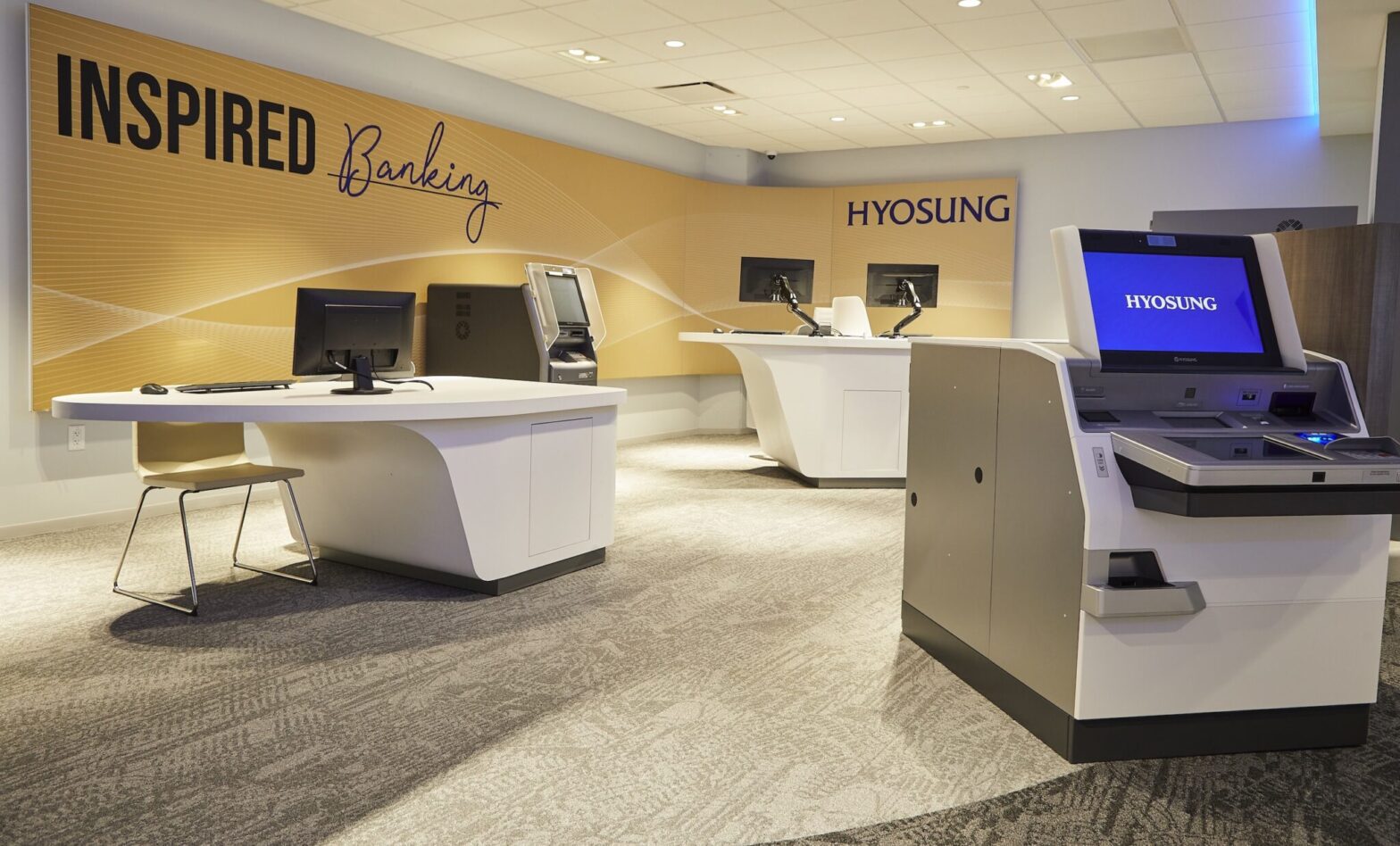

Mr. Keith Lennard serves as the Vice President, Head of Software at Hyosung America. Mr. Lennard is responsible for all Software Development, Professional Services and Managed Services. With 10+ years of leadership experience in Financial Services and nearly 20 years in Software Development, Mr. Lennard has a proven track record of transforming organizations, scaling for growth, and driving execution excellence.
When you walk into a bank or credit union branch, do you ever think about “How much of my money can I withdraw?” or “Which accounts can the teller help me with?” Additionally, consumers typically bring reasonable expectations to mobile and online banking and know they are not depositing cash and performing other transactions that require a “physical” component. But after five decades in production, the limits of an ATM are not intuitively obvious to the general population. Unless a consumer has personally experienced a “Max Daily Withdrawal,” a “Transaction Limit,” or tried to access an account not linked to their card, the bounds of the ATM are somewhat ambiguous and therefore feels limiting to the general public.
With COVID influencing and accelerating financial institutions’ branch transformation plans, the ATM self-service channel grows far more important with social distancing, branch closures and reduced staffing targets. There simply is a need to unlock the ATM’s potential to become a seamless, intuitive alternative to the in-branch experience that cannot be fulfilled by mobile and online banking. Customers need to occasionally withdraw larger sums of cash, they need to cash checks, make split deposits to checking and savings accounts, and pay their car loans via a deposit without finding an open branch. Traditional branch hours are limiting for many and they seek alternative approaches to banking.
The advent of ATM video teller solutions aimed to fulfill a variety of needs: wider transaction sets, expanded business hours, and the promise of branch transformation (i.e. less tellers). Unfortunately, these solutions have failed to address two key components: 1) customers do not intuitively know when to use a video teller and 2) humans are still expensive whether they are sitting in a branch or in a video call center. Most video teller solutions essentially prompt the user up-front to choose between a traditional ATM transaction or a video teller, but customers do not understand they can perform a $500 withdrawal without a teller, but $520 required them to select video teller before inserting their card. The financial institution is really depending on the customer education to hit the video teller and then pays a video teller for five plus minutes to operate the ATM as a remote teller drawer.
With these limitations in mind, the next generation of branch transformations are being driven by true enhanced self-service, where customers intuitively can access advanced transactions and the experience is truly self-service. Rather than living with one set of rules in the branch and a different set at the ATM, customers have come to expect the same experience in both channels. While customers can still use their card and PIN, they also have the option to authenticate like they would in the branch by utilizing information the financial institution already knows (account number, social security number, phone number, address, etc.). Customer education focuses on informing customers that expanded transactions (and authentication methods) are available on the ATM, but the user experience is so seamless that they do not need a tutorial on how to use them. The customer can withdraw $520 without ever knowing their daily limit of $500 or thinking about when to engage a video teller.
This type of seamless customer experience is only possible when connecting the ATM to the financial institution’s core banking platform. With a core-connected ATM, a customer can see all of their accounts, regardless of whether they are connected to their card, they can perform check deposits with cash back using hold rules in-line with the branch, and many more transactions previously inhibited by ATM networks. The financial institution can determine their own limits instead of the ATM process and can allow customers to withdraw $1,000 from a home equity line of credit using their Internet User ID and Password when connected to a core.
If business rules require additional authentication in certain scenarios, a core-integrated solution can be expanded by combining it with a reimagined video teller. The software determines when to engage a video teller automatically within the transaction flow rather than depending on customer to know to initiate. The teller engages for less than a minute to scan an ID or ask challenge questions, and then disengages to allow the transaction to continue. The result is a 75% reduction in teller demand as a video teller is required far less often and for significantly shorter periods of time. This provides significant ROI to the financial institution by reducing labor costs, allowing tellers to focus on value-added customer activities, and driving adoption by eliminating the customer education needs.
Unfortunately, as core-integration gains traction, marketing messages mask that all implementations are not equal. Some solutions are taking the approach of connecting existing video teller applications to the core to eliminate remote teller “dual-entry”. While that gains a minor efficiency, it maintains the headache of the up-front selection of ATM vs. video by the customer and does not significantly lower labor costs. Others require an additional transaction middleware platform, forcing financial institutions to bring transaction processing in-house to access core-connected functionality. This provides the benefit of true enhanced self-service at the ATM, but at a significant cost in terms of software licensing, deployment, custom development, long project schedules, and the ongoing headaches of transaction processing. There are reasons why financial institutions largely outsource transaction processing as many lack the IT staff to run high available, redundant infrastructure that is required to run an ATM network.
Fortunately, the best core-integrated solutions provide a standard, certified enhanced self-service solution that significantly reduces or eliminates video tellers, without middleware, or a need to change the relationship with the ATM processor. The ATM itself is a dual host by maintaining the ATM processor connection and also directly connecting to the core, while providing automated settlement between the systems. Customers (on-us) receive the full benefit of advanced transactions against the core and other users (off-us) continue to transact against the ATM processor. While an oversimplification, a core-connected ATM basically requires a software upgrade at the ATM and a couple firewall rule changes. These solutions are also multivendor and not dependent upon one hardware manufacturer. With this approach, there are no large-scale projects, no custom development, and deployments in under 90 days. The most significant challenge is the financial institution deciding their business rules and if/when to utilize a video teller.
It is hard to imagine a financial institution not benefitting from core-integration and ATM channel owners should evaluate the options available. The hard part is separating the promises and marketing from the fact. Financial Institutions should seek solutions certified with the core provider with a proven track record (i.e. those with 100+ live customers). Many vendors will claim core-integration, but only have a couple custom projects that are not repeatable or supportable and others will point to their “roadmap”. Hundreds of FIs are running Hyosung core-integration solutions today and your technology partner should be able to give you options to see the solution live and provide a 90-day path for your own pilot. If the message does not align with the facts, you should expand your horizons beyond your current ATM vendor and explore Hyosung’s best-in-class solutions.
For more information: hyosungamericas.com/software/core-integration